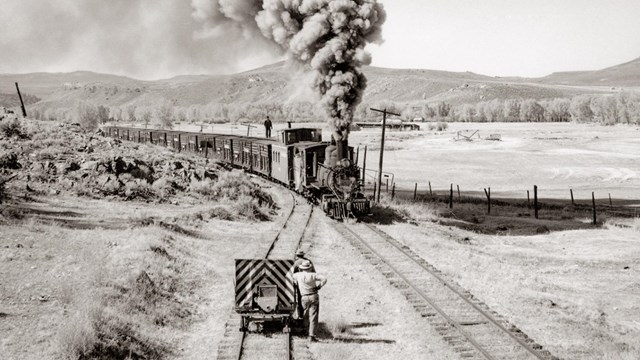|
Indigenous groups used a variety of routes before Spanish exploration of this area in the 1700s. Juan Maria Antonio Rivera, a Spanish explorer traveling north from New Mexico, traveled and explored the area around the Gunnison River in 1765. These expeditions focused on potential opportunities to mine silver. Rivera interacted with both Utes and Paiutes during his expeditions. Due to Mexico’s independence from Spain in 1821, trade opened all the way to California. Woolen goods, horses, and even slaves were moved and traded along this route. After Antonio Armijo lead the first commercial caravan from Santa Fe, New Mexico to Alta, California (Los Angeles) in 1829, traders continued using similar routes for the next two decades. North BranchThree different trail systems exist in Colorado that are part of the Old Spanish Trail trade network. The North Branch, which was first used in 1831, traveled from New Mexico through southwestern Colorado. This route included present day Taos, Great Sand Dunes National Park, Saguache, Cimarron, Cerro Summit along U.S. Highway 50, Montrose, and across the Uncompahgre River. It then crossed the Gunnison River and headed towards present day Grand Junction and into Utah. Although trade unofficially ended in 1848 after the Mexican-American War, the route was still used to reach California for the gold rush, to move livestock, and for government exploration expeditions. John W. Gunnison and his expedition roughly followed the North Branch in 1853. 
Old Spanish National Historic Trail
Learn more about the historic trade route and trail sites from Santa Fe, New Mexico to Los Angeles, California. 
History & Culture
Human occupation of the Curecanti area dates back to at least 10,000 years ago. |
Last updated: April 30, 2025
